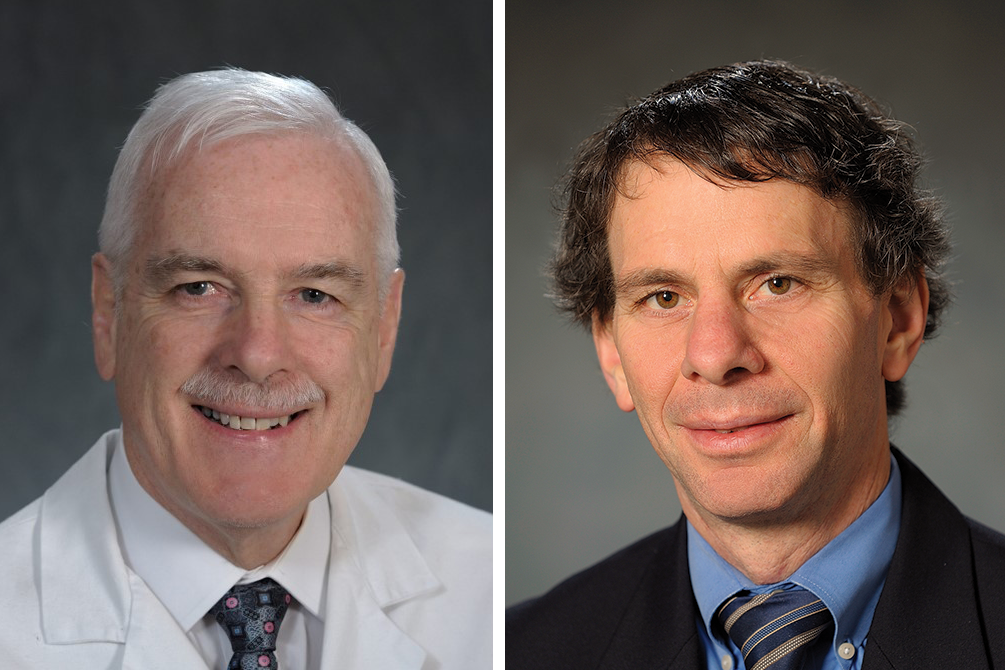
Now Enrolling: EA5231/CLEAR Study for Patients With Operable Non-Small Cell Lung Cancer
July 10, 2025
News in Brief, August 2025
August 28, 2025From the Co-Chairs, July 2025


By Peter J. O’Dwyer, MD (left)
and Mitchell D. Schnall, MD, PhD
The world continues to spin, and the story from Washington continues to unfold. At the time of this writing, the FY26 budget proposes deep cuts both to indirect costs broadly, and to the NIH budget specifically. Dr. Bhattacharya’s recent testimony on Capitol Hill reiterates this intent. We have previously released statements on the disastrous consequences of gutting federal funding for cancer research. At this juncture, we have to be clear that the proposed cuts to direct and indirect funding, if passed by both chambers of Congress, will result in a profound decrease in public funding for ECOG-ACRIN. Project that across all the Cooperative Groups, and you see that a large part of our work together to cure cancer will simply grind to a halt. Research that is stopped rarely ever gets going again, and so both the work and its promise for patients is lost. Furthermore, discontinuing trials for which participants have already volunteered and are undergoing treatment does an enormous disservice to patients.
We are joined by our Cancer Research Advocates Committee in developing outreach to other patient groups and foundations. We urge you now to re-engage with your elected representatives, to emphasize the gains that our research has already accomplished, and continues to advance, and to exhort them to be champions for cancer research. Don’t let the budgetary uncertainty in Washington deter you—when the dust clears (the next fiscal year begins October 1), it will be too late. We must act to protect public support for biomedical research. We often hear that a decrease in our funding will merely pass that burden to industry. Nothing could be further from the truth. Companies have neither the motivation nor the resources to do trials that are outside their specific business mission. They are vital partners in our work, providing both drugs and support to complement the public expenditure—but they cannot be expected to replace it. In reality, our roles are complementary, not overlapping, and we conduct the studies to optimize the clinical implementation of their discoveries. Continued advances depend on both public and private resources, acting in concert. Please pick up the phone and register your opinion locally. Click here to look up contact information for your district.
You should know about some publicity related to a publication from Smith-Bindman et al. regarding a modeling study that estimated the theoretical risk related to CT scan–associated radiation. Our perspective on this issue aligns with a formal statement from the American College of Radiology. While we need to always ensure we are limiting radiation exposure of our patients to what is medically necessary, we also have to consider the risk and benefits of CT scans in appropriate context. The actual risk of cancer related to medical radiation exposure is low and difficult to measure. Most of the literature is based on theoretical modeling (similar to the Smith-Bindman et al. publication) and this is difficult to validate. In addition, there has been a significant effort on behalf of vendors and the radiology community to reduce CT-associated radiation exposure, which continues to decrease almost every year. Finally, we need to consider the actual dose in the context of radiation exposures associated with daily life. While a CT of the abdomen and pelvis may be associated with approximately 5 mSv of radiation exposure, the yearly background radiation exposure is approximately 2 mSv, and the incremental dose associated with living at high altitude (for example, Denver) is an additional 1.5 mSv per year. It is important always to consider the risks of any procedure, including the radiation risk related to CT scans, but these must also be balanced against the significant benefits. This is particularly the case for patients with cancer, where early detection of recurrence, progression, and disease can make a significant difference in outcome.
As of this writing, the public-private partnership agreed between ECOG-ACRIN, NCI, and Caris has resulted in completion of the somatic sequencing of tumors from the TAILORx trial participants. The analysis of these data is underway and will be presented in a prominent forum in the near future. We celebrate this landmark accomplishment and thank our Caris colleagues for the material support without which these results would not be available so expediently to guide patient decisions.
Read the July 2025 issue here.
![ECOG-ACRIN logo[19516]275×75](https://blog-ecog-acrin.org/wp-content/uploads/2021/03/ECOG-ACRIN-logo19516275x75.png)
